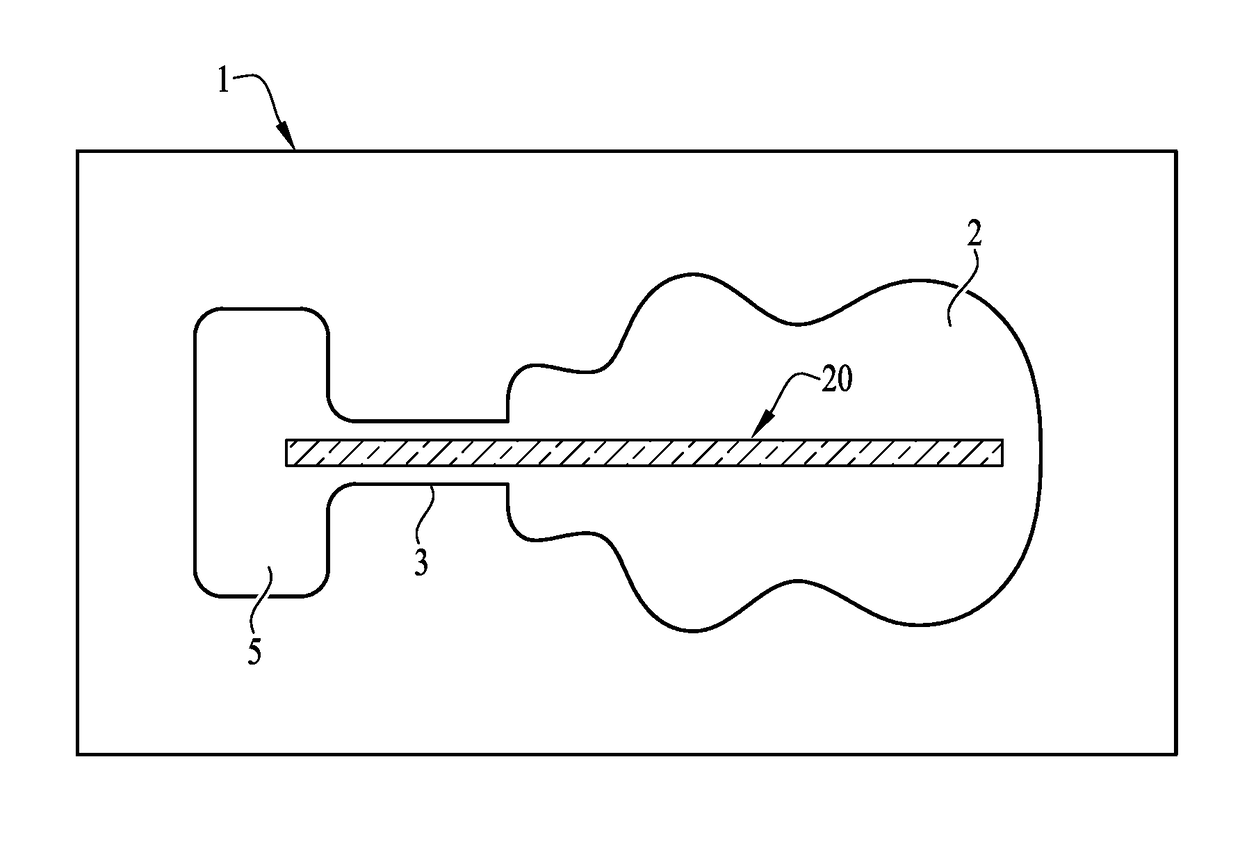Moulding process
a moulding and process technology, applied in the field of moulding process, can solve the problems of difficult to meet consumer demand for more bespoke shapes, time-consuming and expensive production of moulds for such a process, commercially viable, etc., and achieves the effect of reducing lead time, cost, and easy recycling after us
- Summary
- Abstract
- Description
- Claims
- Application Information
AI Technical Summary
Benefits of technology
Problems solved by technology
Method used
Image
Examples
Embodiment Construction
[0054]FIGS. 1 and 2 illustrate, in plan and cross-sectional view respectively, a mould for use in a method of the present invention, generally indicated by 1. The mould 1 has an indentation 2 corresponding to the desired shape of a moulded item to be made. Adjacent one edge of the indentation 2 is a weir 3 that has a height at, or just below the height of the surrounding plane 4 of the mould. In particularly preferred embodiments, the height difference between the top of the weir 3 and the top surface 4 of the mould is approximately the same as the thickness of the elongate member 12 described below. In the embodiment illustrated, the mould further comprises a second indentation 5 adjacent the weir 4, but on the other side to the indentation 2. In some embodiments, the second indentation 5 is not used, but its function will be described below.
[0055]FIGS. 3 and 4 illustrate, in cross-section, a mould former 6 for use in a method of the invention. The mould former 6 is shaped to inclu...
PUM
| Property | Measurement | Unit |
|---|---|---|
| Freezing point | aaaaa | aaaaa |
| Phase | aaaaa | aaaaa |
Abstract
Description
Claims
Application Information
 Login to View More
Login to View More - R&D
- Intellectual Property
- Life Sciences
- Materials
- Tech Scout
- Unparalleled Data Quality
- Higher Quality Content
- 60% Fewer Hallucinations
Browse by: Latest US Patents, China's latest patents, Technical Efficacy Thesaurus, Application Domain, Technology Topic, Popular Technical Reports.
© 2025 PatSnap. All rights reserved.Legal|Privacy policy|Modern Slavery Act Transparency Statement|Sitemap|About US| Contact US: help@patsnap.com



